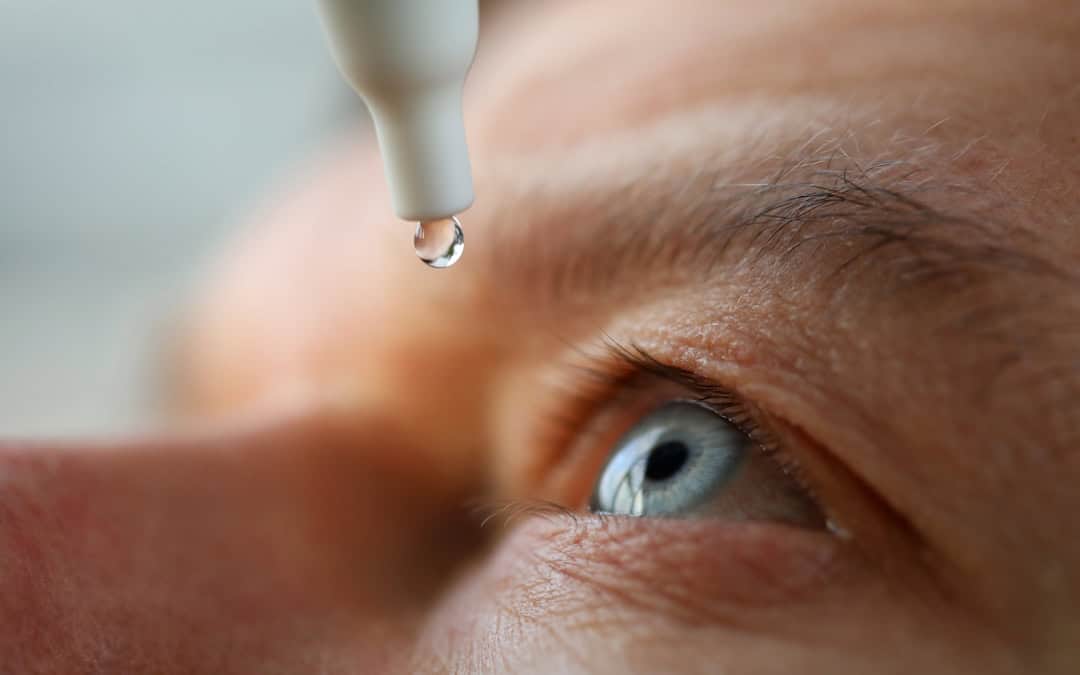Many people don’t know they have glaucoma. Approximately half of all people with glaucoma don’t even know they have the condition. This silent thief of sight creeps in without obvious symptoms, damaging your optic nerve and potentially causing permanent vision loss when left untreated. While the damage from glaucoma can’t be reversed, getting treatment early gives you the best chance to preserve your remaining vision.
The good news: You have several effective treatment options available if you’ve been diagnosed with glaucoma.
Most eye doctors begin with prescription eye drops that lower the pressure inside your eye, protecting your delicate optic nerve from further damage. Depending on which type your doctor prescribes, you might need to use these drops up to four times each day.
When eye drops alone don’t effectively control your eye pressure, your doctor might suggest laser treatments. This type of eye surgery can improve your eye’s natural drainage system. And for more advanced glaucoma cases, your eye doctor may recommend other surgical options.
Understanding all your treatment possibilities becomes especially crucial if you belong to a higher-risk group. You are considered as a higher risk for glaucoma if you are over 60, are of Hispanic/Latino background, or are an African American over age 40. Taking an active role in your treatment decisions helps ensure you receive the most appropriate care for your specific situation.
Understanding Glaucoma and Getting Diagnosed in Pittsburgh
What is glaucoma and why early detection matters
Glaucoma quietly damages your vision without warning signs. This group of eye diseases harms your optic nerve, often due to increased pressure inside your eye. This pressure gradually destroys the nerve fibers that send visual information from your eye to your brain. Despite being the second-leading cause of blindness worldwide, most people with early glaucoma notice no symptoms until permanent damage has already occurred.
Two main types of glaucoma affect most patients. In open-angle glaucoma, your eye’s drainage system looks normal but doesn’t work properly. Angle-closure glaucoma happens when your iris bulges forward and blocks the drainage system entirely.
Several factors increase your risk of developing glaucoma:
- Age (everyone over 60 faces higher risk)
- Family history (many types have genetic links)
- Medical conditions like diabetes, high blood pressure, and hypothyroidism
- Being nearsighted
- Prolonged corticosteroid use
- Elevated intraocular pressure
- Being African American (higher risk)
Regular eye exams are crucial because early glaucoma has no warning signs. The reality is that approximately 50% of Americans with glaucoma don’t know they have it. Only through comprehensive eye exams can your doctor detect glaucoma before it causes significant vision loss.
Where to get a glaucoma diagnosis in Pittsburgh
Finding qualified eye care in Pittsburgh is straightforward. Chang Eye Group provides comprehensive glaucoma evaluations and can be reached at (412) 429-2020. The ophthalmologists at Chang Eye Group offer decades of clinical experience diagnosing and treating all types of glaucoma.
When you visit for a glaucoma check, your doctor will perform several specific tests:
- Tonometry – measures the pressure inside your eye
- Ophthalmoscopy – examines the shape and color of your optic nerve
- Perimetry – checks your complete field of vision
- Gonioscopy – inspects the angle where your iris meets cornea
- Pachymetry – measures your cornea thickness
The American Academy of Ophthalmology suggests eye exams every 1-2 years for adults over 40. If you have additional risk factors for glaucoma or other eye diseases, you might need more frequent examinations. Your eye doctor will help you determine the best frequency based on your unique situation.
Taking control of your eye health is essential to prevent vision loss. Talk with your eye doctor about your personal risk factors and how often you should schedule exams. With early diagnosis, proper treatment, and regular monitoring, you can successfully manage glaucoma and protect your vision.
First-Line Treatments: Glaucoma Eye Drops and Medications
When you’re first diagnosed with glaucoma, your eye doctor will typically recommend prescription eye drops as the initial treatment. These medications work in two main ways – either by reducing how much fluid your eye produces or by helping that fluid drain more efficiently. Both approaches help lower the pressure inside your eye (called the intraocular pressure or IOP) to protect your optic nerve from further damage.
Types of glaucoma eye drops and how they work
Your doctor might prescribe several different classes of eye drops, each targeting a specific aspect of eye pressure regulation:
Prostaglandin analogs (medications like Lumigan®, Xalatan®, and Travatan Z®) often serve as first-line treatments because they effectively lower eye pressure by increasing fluid outflow. These drops can lower IOP by 28-31% and usually only need to be used once daily, typically at bedtime.
Beta blockers (such as Timoptic® and Betoptic®) work by decreasing the production of aqueous humor – the clear fluid that fills the front part of your eye. While these medications effectively reduce eye pressure, they may affect your heart rate and breathing.
Alpha agonists (such as Alphagan® P) pull double duty by both reducing fluid production and improving drainage. They’re especially helpful at preventing pressure spikes after eye procedures.
Carbonic anhydrase inhibitors decrease fluid production in your eye and come in both drop and pill forms.
Rho kinase inhibitors help increase drainage by relaxing the trabecular meshwork – the tissue that normally drains fluid from your eye.
Common side effects and how to manage them
Each type of glaucoma medication can cause different side effects. Prostaglandins might cause redness in the white part of your eye, along with eyelash growth and iris darkening. Beta blockers could potentially trigger breathing problems or affect your heart rate. Alpha agonists commonly cause stinging and dry mouth.
To help manage these side effects, try these practical approaches:
- Use only the prescribed amount – using too much increases your risk of side effects
- After putting in your drops, close your eyes and gently press the inner corner for 2-3 minutes to keep the medication from entering your bloodstream
- If you wear contact lenses, remove them before using your drops and wait at least 15 minutes before putting them back in
Tips for staying consistent with glaucoma medication
Nearly 40% of patients don’t take their glaucoma medications as prescribed. However, the inconsistent use of eye drops can be a serious risk to your vision.
Here are some useful steps to help stay on track with your eye drop medications:
- Create a reminder system – set alarms on your phone or link your eye drop routine to daily habits like brushing your teeth
- Keep your drops next to items you use every day (like your toothbrush or coffee maker)
- If you use more than one type of eye drop, wait 5-10 minutes between different medications
- Tell your doctor right away about any side effects – they may be able to adjust your medication
- Ask family members to help you remember or assist with putting in your drops
Remember that these medications don’t improve vision that’s already been lost – their job is to prevent further damage. This makes consistent use crucial even when you don’t notice any changes in how well you can see.
When Medications Aren’t Enough: Laser Treatment for Glaucoma
When eye drops alone fail to control your glaucoma, you don’t immediately need to jump to traditional surgery. Laser procedures offer an effective middle ground that might significantly reduce or even eliminate daily eye drop medications.
A procedure named Selective Laser Trabeculoplasty (SLT) has become particularly popular among Pittsburgh eye doctors and patients alike.
How laser trabeculoplasty helps lower eye pressure
SLT works by applying gentle, low-energy laser pulses to your eye’s drainage tissue (the trabecular meshwork). This targeted approach triggers natural biological changes that improve fluid drainage and lower the pressure inside your eye. Unlike older laser treatments, SLT precisely targets specific cells without damaging the surrounding healthy tissue.
The results speak for themselves. Studies show SLT can lower eye pressure by approximately 20-30% in the majority of patients. While many doctors traditionally used laser only after medications failed, recent research suggests SLT works well as a first treatment option. The groundbreaking LiGHT study published in The Lancet found that SLT was not just more effective and safer than medications, but also more cost-effective over time.
For most patients, SLT results last between 1-5 years before the effect gradually fades. The good news is that since SLT doesn’t damage surrounding tissue, the procedure can typically be repeated when the pressure-lowering effect diminishes.
What to expect during and after laser treatment
The SLT procedure is surprisingly quick and typically takes only 5-10 minutes. Qualified eye doctors will perform the laser treatment in their clinic so that it is very convenient for you.
The procedure includes the following steps:
- Numb your eye with special drops
- Place a contact lens on your eye to precisely direct the laser
- Apply the laser while you see bright flashes of light
- Remove the lens and check your eye pressure
After treatment, you might notice some temporary blurriness in your vision which is typical and due to the contact gel that was used on your eye. Most patients experience minimal discomfort, though some report mild irritation or inflammation. Your eye doctor might also prescribe anti-inflammatory drops for a few days after the procedure.
Don’t expect immediate results. The full pressure-lowering effect usually takes 1-3 months following your procedure. While about 5% of patients experience a temporary increase in eye pressure after laser treatment, this usually resolves within 24 hours with appropriate medication.
Even after successful SLT, you’ll need regular follow-up appointments to monitor your eye pressure and overall glaucoma status. Some Pittsburgh patients find that SLT alone controls their glaucoma, while others may need a combination of laser treatment and reduced medication.
Surgical Options: From Traditional Surgery to Minimally Invasive Glaucoma Surgery (MIGS)
When eye drops and laser treatments don’t adequately control your glaucoma, surgical options become the next step to protect your remaining vision. While surgery can’t bring back the vision that you have already lost, it can help prevent further damage by reducing your eye pressure (IOP).
Overview of glaucoma surgery options
Your ophthalmologist may recommend one of three main surgical approaches based on your specific glaucoma type, how advanced it is, and your overall eye health:
- Traditional filtering surgery (trabeculectomy)
- Glaucoma implant surgery (tube shunts)
- Minimally invasive glaucoma surgery (MIGS)
Most eye doctors suggest trying laser treatment before moving to traditional surgery unless your eye pressure is dangerously high or your optic nerve shows significant damage.
Benefits and risks of traditional surgery
Trabeculectomy remains the gold standard for glaucoma surgery when other treatments haven’t worked. During this procedure, your eye surgeon creates a small opening in the white part of your eye (sclera), creating a new drainage pathway for fluid to bypass clogged channels. While highly effective at lowering eye pressure, recovery typically takes several weeks.
For some types of glaucoma, especially neovascular or congenital glaucoma, tube shunt implantation offers another option. This 1-2 hour procedure involves placing a tiny tube in your eye that helps drain excess fluid.
It’s important to understand the potential risks of traditional eye surgery. These traditional surgeries can cause complications including infection, bleeding, excessively low eye pressure, cataracts, and rarely, vision loss. In fact, some eye surgeons actually describe trabeculectomy as “brutal” on the eye, often causing significant inflammation with unpredictable healing and outcomes.
What is MIGS and who is it for
MIGS (Minimally Invasive Glaucoma Surgery) is one of the newer treatments that uses tiny incisions and microscopic equipment to lower eye pressure with much less disruption to your eye’s tissues. The benefits of MIGS include:
- Much faster recovery times
- Fewer complications than traditional surgery
- Outpatient procedures under local anesthesia
- Significantly less post-operative pain
MIGS works best for patients with mild to moderate glaucoma, and eye doctors can often perform these procedures at the same time as a patient’s cataract surgery. While MIGS procedures offer greater safety, they typically don’t lower eye pressure as dramatically as traditional surgery, making them less suitable for advanced glaucoma cases.
Finding glaucoma surgeons in Pittsburgh
Pittsburgh offers many qualified specialists for glaucoma surgery. Chang Eye Group provides both traditional and newer, less invasive surgical approaches. With an experienced team of glaucoma specialists and two locations in Pittsburgh, finding qualified care shouldn’t be difficult.
When choosing an eye surgeon, look specifically for specialists with extensive experience in glaucoma procedures rather than general eye surgeons. The right surgeon can help you determine which surgical approach will work best for your unique situation.
Our Eye Care Professionals are Ready to Help
Living with glaucoma requires a personalized treatment approach based on your specific eye health needs. While the damage from glaucoma can’t be reversed, getting early treatment significantly slows its progression and protects your remaining vision. The good news is that Pittsburgh offers numerous qualified specialists who can effectively manage your care, whether you begin with prescription eye drops, progress to laser treatments, or eventually need surgical intervention.
Each treatment option offers unique benefits.
Eye drops work as your first line of defense, while laser treatments like SLT provide an excellent middle step for many patients whose pressures aren’t controlled with medications alone. If these options don’t sufficiently lower your eye pressure, surgical interventions ranging from traditional trabeculectomy to newer MIGS procedures remain available based on how severe your glaucoma has become.
Regular monitoring is essential regardless of which treatment path you follow. By scheduling consistent follow-up appointments, using your medications as prescribed, and openly discussing side effects or concerns with your eye doctor, you can effectively manage glaucoma for years to come. Contact Chang Eye Group for a comprehensive eye exam with glaucoma screening.
Remember that glaucoma management technology continues to improve each year. Despite the challenges of living with this chronic condition, most patients maintain good vision throughout their lives when diagnosed early and treated appropriately. Your proactive approach to eye health today builds the foundation for better vision tomorrow.






